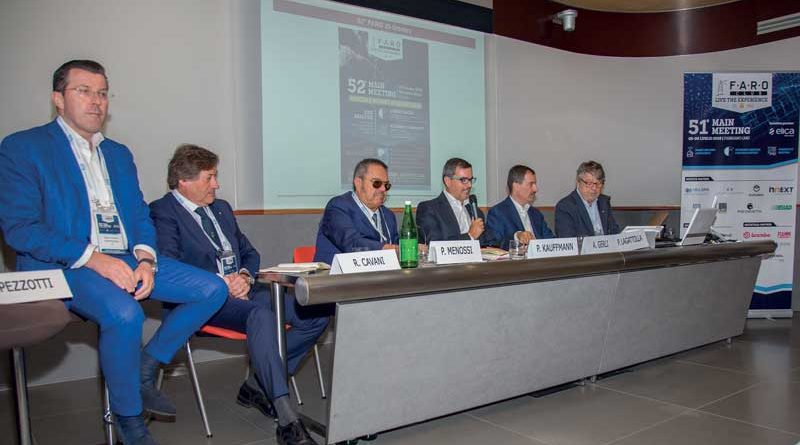Current Situation and Outlook for the Aluminium Market
All things considered, no severe turbulence was recorded on the raw material scenario during the past few months. The market is healthy and there is no shortage of business opportunities while manufacturers enjoy good margins. Uncertainties are volatility and the possible slowing down of some industries
by Giovanni Mèllori
Having reached the turning point of its 51st Meeting, the F.A.R.O. Club partly changed its image introducing some innovations in its format. Among these, the opening of the agenda with a new and at the same time current focus, Internet of Things and its impacts on the appliances and building sectors. During the two-day appointment in Fabriano (near Ancona) hosted by Elica, the world’s leading producer in the cooker hood sector, the Vision to Vision moment included debate on the hot topics of the business among entrepreneurs who may very well be called visionary and who in this case were Francesco Casoli and Elio Catania, the Presidents respectively of Elica and of Confindustria Digitale. With other players, the format will be repeated even on October 25th when the 52nd Meeting will be held at Kilometro Rosso in Bergamo (IT) for the day dedicated to the 2019 purchasing budget. In Fabriano there was of course the Kerb Time, the moment for the free exchange of opinions and experiences among leaders in the global scenario of commodities. And as always this provided very interesting food for thought regarding aluminium too.
Is the car industry about to swerve?
The debate on this commodity was moderated, in keeping with the tradition, by the President of Global Consulting Team, Paolo Menossi. He detailed the effect of tariffs which, along with Trump’s sanctions against Rusal (which have practically frozen the activities of this important player), clearly had an impact on prices, affecting even alumina. All of this overlapped with the issue of closures in South America and Australia, which may be attributed to strictly environmental reasons. In a short period this brought alumina prices to double, thereby reaching a threshold, considered much more reasonable, of about 400 dollars. At the same time, even premiums on ingots decreased considerably while leaving billets practically unaltered. Paolo Menossi considered that the introduction of tariffs is, bluntly put, an own-goal for US manufacturers more than for the rest of the world, since the US industry is in any case forced to purchase abroad (at high prices) pending a complex relaunch of domestic production. The consultant’s worlds showed some concern for the future. Up till July it could be said that 2018 has been a good year and the industry’s companies worked very well. However, a decrease, although slight, in the consumption of the metal on the part of final users in summer was undermining the good order portfolio which had finally and substantially built up in for semis manufacturers. Expectations were therefore shifted to September, which will have to be strong so as to drive demand upwards and consolidate the fundamentals, making up for the possible slowdown of the car industry. This could be possibly one of the most harmful events for the aluminium sector, considering the strong demand for the material which the automotive industry generated during the past few years. A certain fear also concerns the possibility of breaking the LME ceiling set at 2,000 dollars which Menossi however states is well supported by the fundamentals of costs. Favoured by the availability of scraps and above all by the marked difference in price between billets and ingots (unusually close to the 300 dollar mark), in Italy the secondary production of billets is growing.
Aluminium, in the context of the Kerb Time, was also the topic dealt with by the founder of the F.A.R.O. Club, Paolo Kauffmann. According to Kauffmann, in general the commodity respected the forecasts up to the summer of 2018 and should do so even in the remaining months, with an increase in prices of 0.6% envisaged by the end of the year. Between the third and fourth quarter of 2018 the value of this raw material should settle down at around 2,110-2,130 dollars, in spite of the fact that elsewhere it was assumed that its price could reach the 2,140-2,150 dollar range between the third and fourth quarter; or perhaps swing in an interval included between 2,075 and 2,100 dollars. Talking about aluminium, it is mandatory to touch upon the theme of the automotive industry. Elica was the ideal host to talk about intelligent solutions for residential and commercial buildings and this is where the representative of Ducker Worldwide, Paul Mooney, made an interesting comparison between building and automotive. Both industries are carrying out intense research on low-impact materials. And both are dealing with lightweighting and CO2 reduction.

